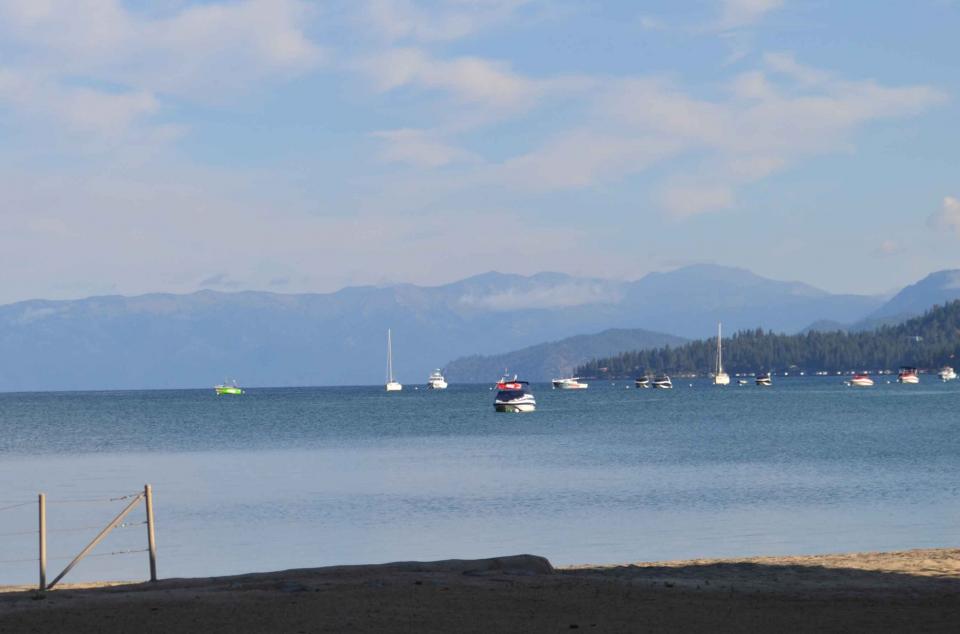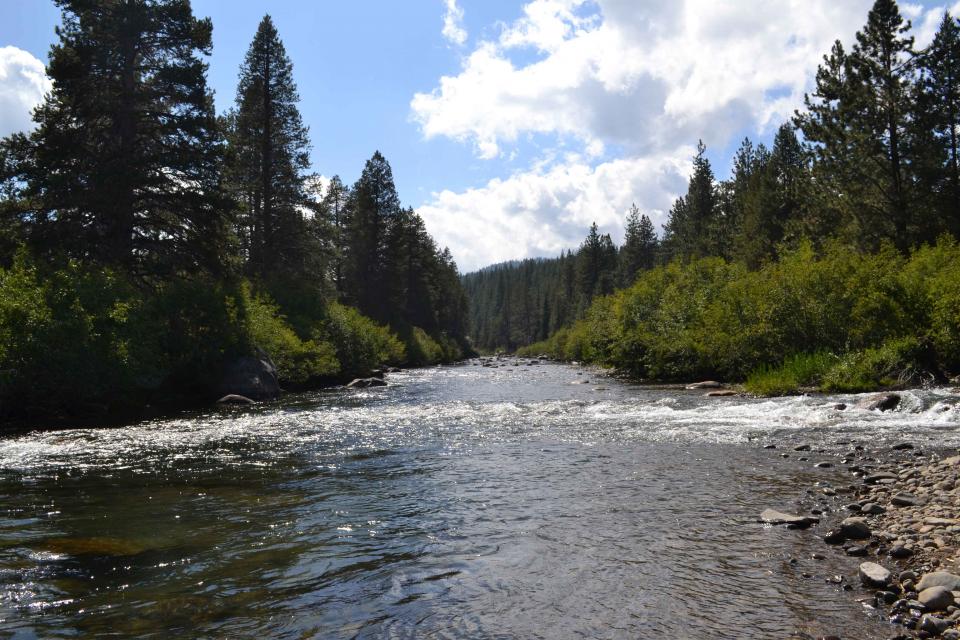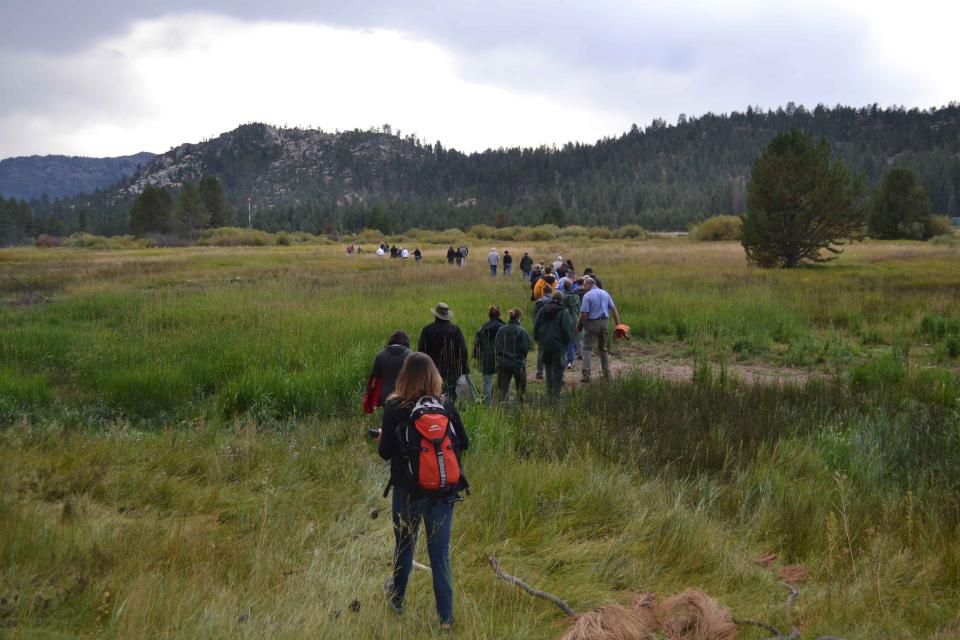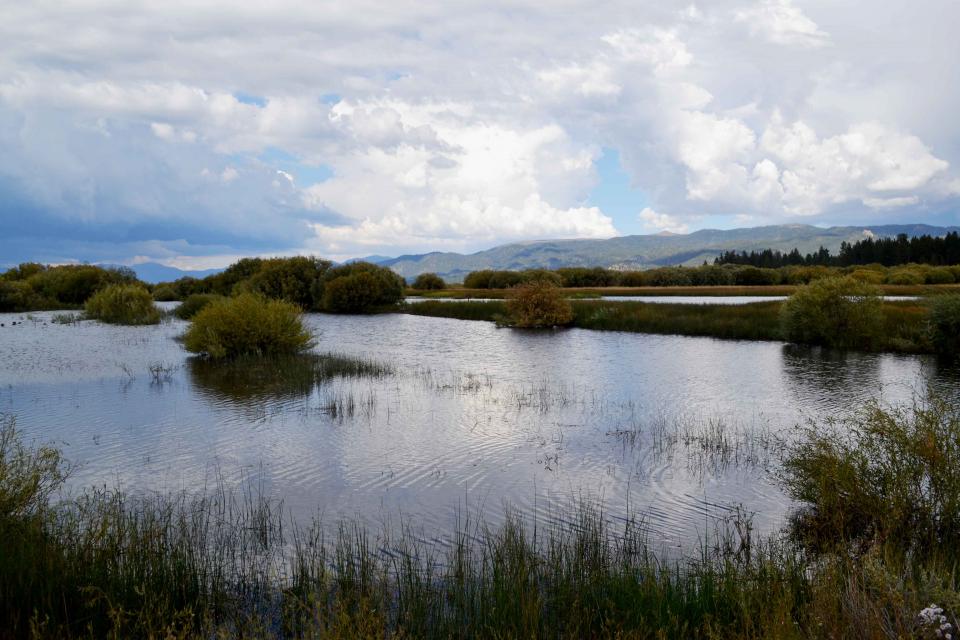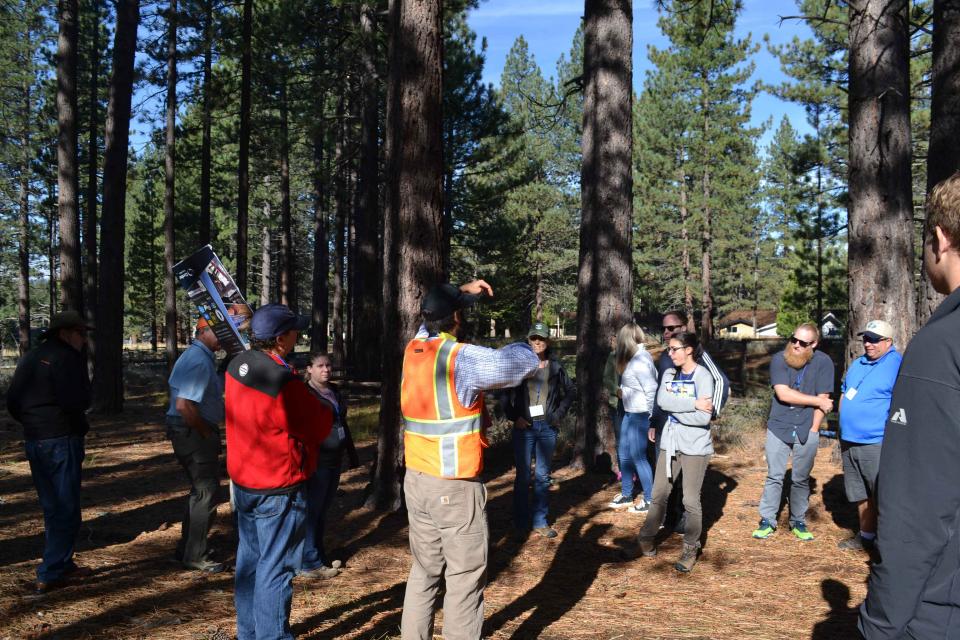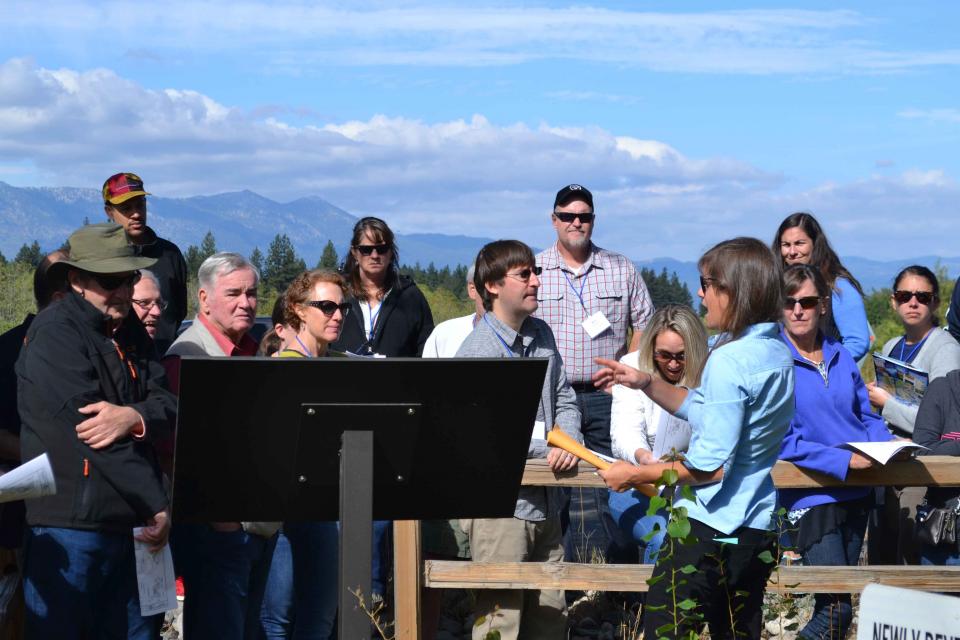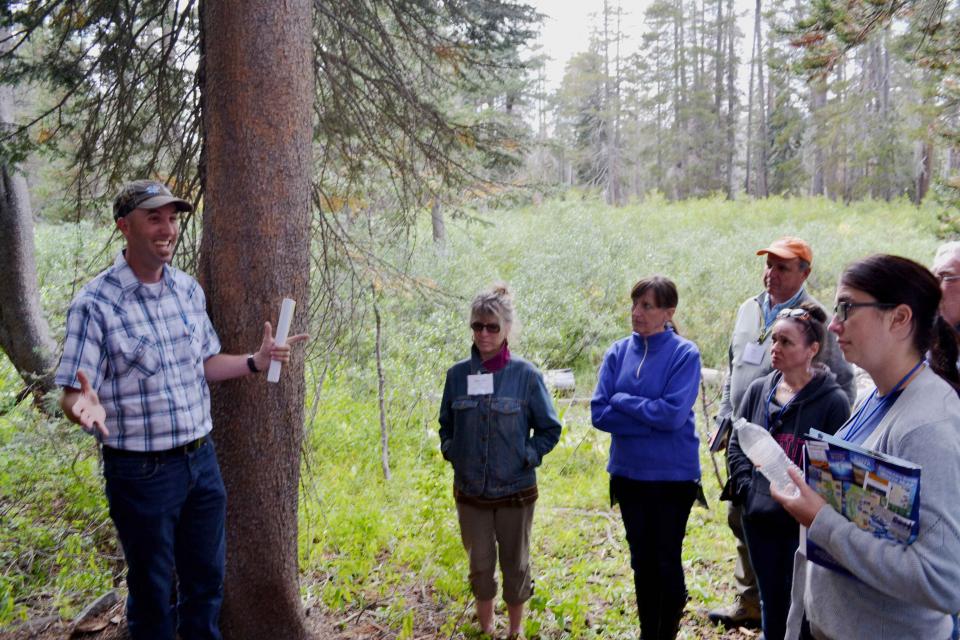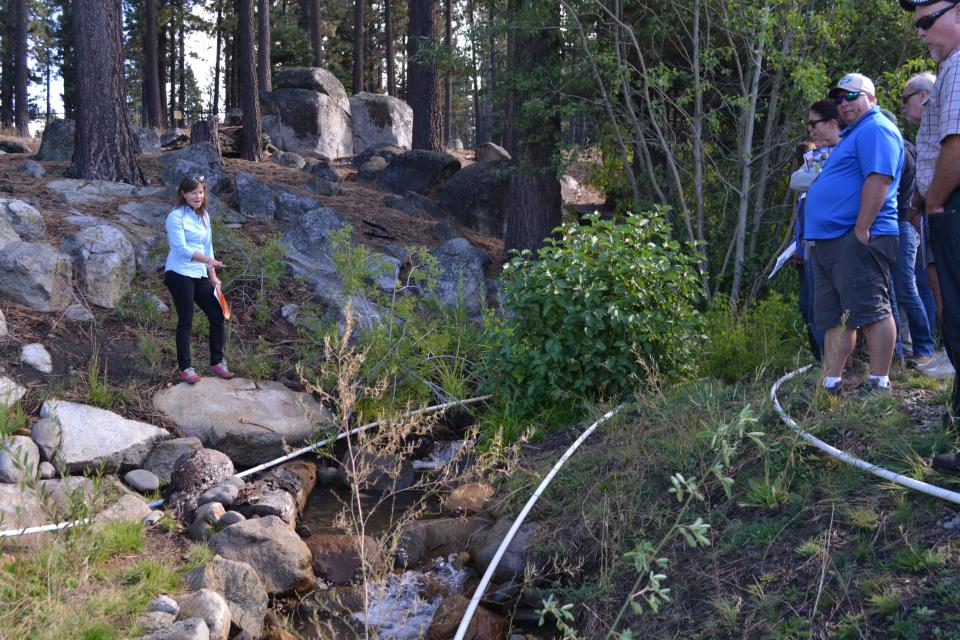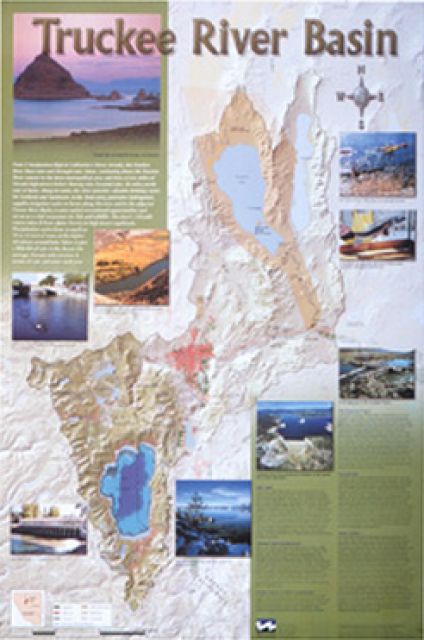ON THE ROAD: This Iconic High Sierra Lake Was Once Named…Bigler?
Lake Tahoe was a stop on our Headwaters Tour June 28-29
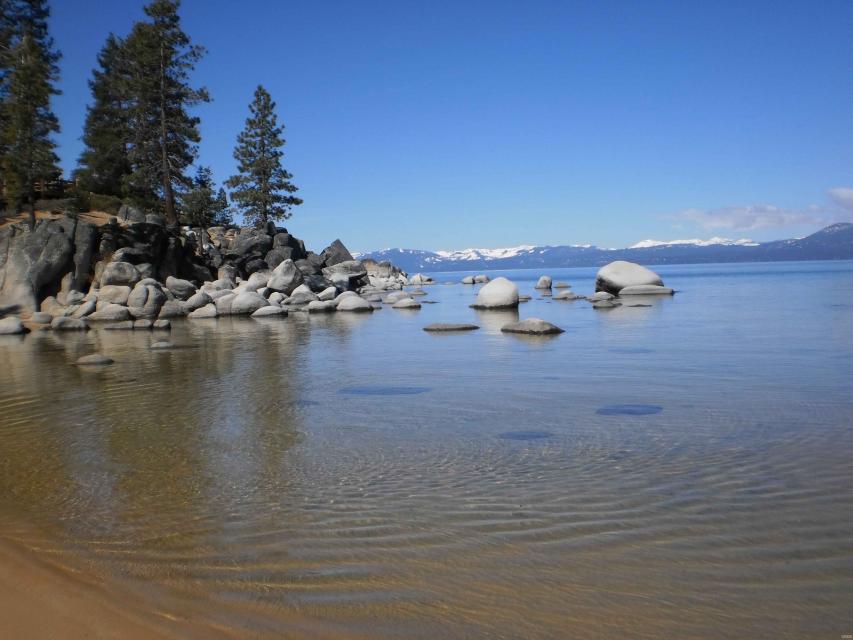 Lake
Tahoe, the iconic high Sierra water body that straddles
California and Nevada, has sat for more than 10,000 years at the
heart of the Washoe tribe’s territory. In fact, the name Tahoe
came from the tribal word dá’aw, meaning lake.
Lake
Tahoe, the iconic high Sierra water body that straddles
California and Nevada, has sat for more than 10,000 years at the
heart of the Washoe tribe’s territory. In fact, the name Tahoe
came from the tribal word dá’aw, meaning lake.
The lake’s English name was the source of debate for about 100 years after it was first “discovered” in 1844 by people of European descent when Gen. John C. Fremont’s expedition made its way into the region. Not long after, a man who carried mail on snowshoes from Placerville to Nevada City named it Lake Bigler in honor of John Bigler, who served as California’s third governor. But because Bigler was an ardent secessionist, the federal Interior Department during the Civil War introduced the name Tahoe in 1862. Meanwhile, California kept it as Lake Bigler and didn’t officially recognize the name as Lake Tahoe until 1945.
It was the discovery of gold and silver in the Tahoe region in the mid-1800s that first caused it to mushroom into a bustling commerce area. And the surrounding forest was feverishly cut down to supply timber to shore up the mines.
In “Roughing It,” Mark Twain described his impression upon first seeing the lake:
“…at last the Lake burst upon us—a noble sheet of blue water lifted six thousand three hundred feet above the level of the sea, and walled in by a rim of snow-clad mountain peaks that towered aloft full three thousand feet higher still! It was a vast oval, and one would have to use up eighty or a hundred good miles in traveling around it. As it lay there with the shadows of the mountains brilliantly photographed upon its still surface I thought it must surely be the fairest picture the whole earth affords.”
World-renowned today for its crystal-clear, azure water, the lake is fed by 63 streams, but water only flows out of one – the Truckee River, which makes its way to Pyramid Lake. It is the nation’s second-deepest lake after Oregon’s Crater Lake, stretching down 1,645 feet.
Lake Tahoe’s clarity has been measured by scientists with the University of California, Davis for 50 years. The results show a reduction caused in part by runoff of nonpoint source pollution. In 2017 university researchers reported that the number of days during which the lake exhibits summer-like conditions has increased nearly 26 days since 1968. In addition, the lake has been warming half a degree each year, which is 14 times faster than the long-term warming rate.





